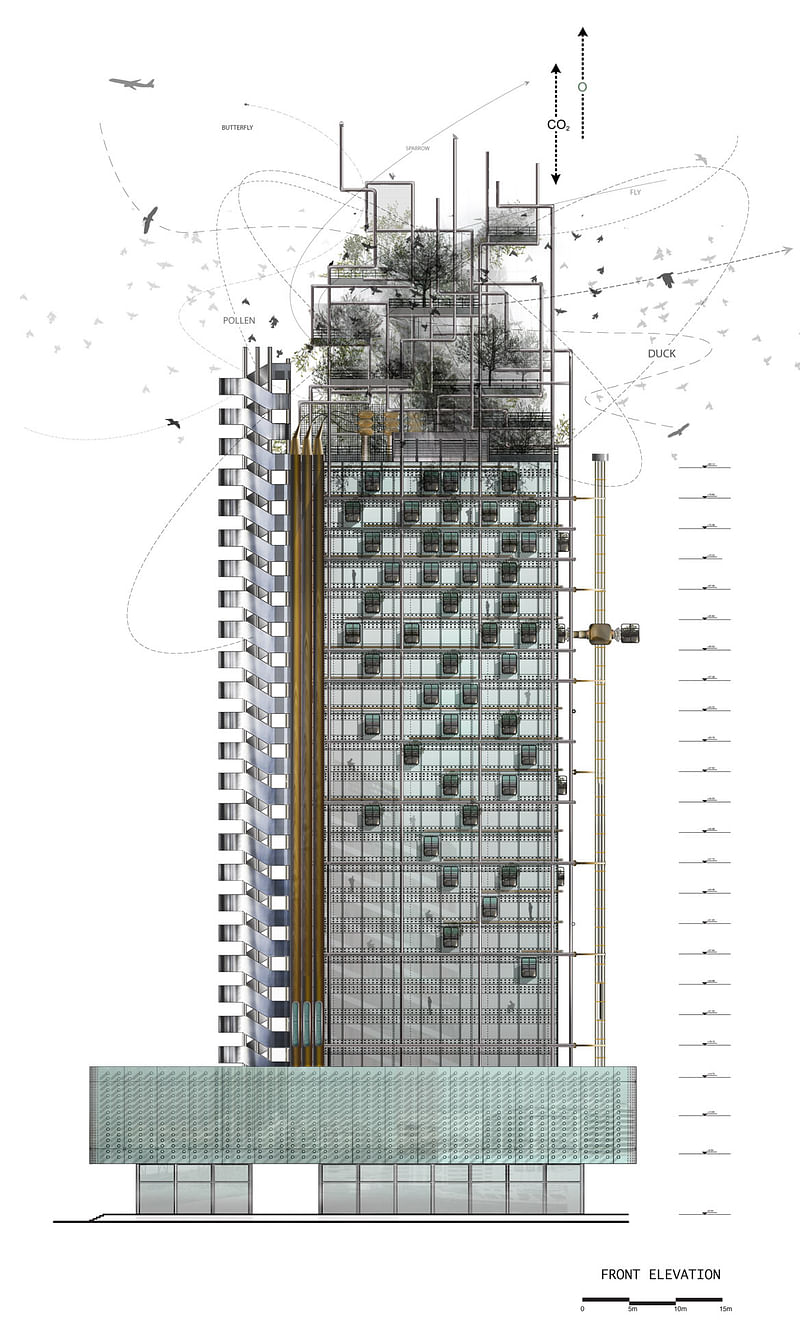Engineered Biotopes Commended in Piraeus Tower 2010 Competition
By Bustler Editors|
Wednesday, Jul 28, 2010

Related
London-based Teammates Anthi Grapsa Konstantinos Chalaris, have shared with us their project 'Engineered Biotopes'.
Their proposal was for a competition in Greece, and was given a Commendation. The title of the competition was ‘Piraeus Tower 2010 – Changing the Face/Façades Reformation’, organized by DUPONT and greekarchitect
The cities of Attica and especially Piraeus is a city with a very low proportion of open green spaces to the number of its inhabitants compared to European standards.
Our proposal for the Façade reformation of Piraeus Tower intends to use technology for the best possible adaption of nature on the building. Using modern agricultural techniques in the construction of the building we allow nature to flourish with the help of plants and birds that already exist around the city.

The program of the facade varies through its vertical expression.
On the outside of the first two floors, the plant nursery consists of a grid of glass tubes used to nurture seedlings. From a distance these appear as a shimmering form, reflecting light onto the street provoking the attention of the passerby.

Floors 3-22 consist of small biotopes that produce low vegetation for the workers and visitors inside the building. This system consists of a robotic crane and specially designed modules where plants are grown. The crane is connected to a computer, which re-positions the modules based on the weather conditions, sun light and water consumption. If a crop is receiving too much sunlight, the module is moved to the shade either horizontally or vertically until finding the required position.

The proximity of the modules to the inhabitants of the building challenges the conventional distance of man from nature within cities, and asks the question: Can man compromise and give up some of his personal space for nature?
The movement of these modules creates an urban choreography, a microcosm of the dynamic movements of Piraeus Port, where containers and ships are constantly reconfigured.

The formation of the proposed facade projects the horizontal city grid of the surrounding area onto the vertical expression of the building linking the structure to its context and creating a form familiar to the inhabitants of the area.
At the top, the roof structure facilitates the colonisation of the building by nature, allowing the growth of wild plants while attracting insects and wild birds.

We anticipate that the proposal will evolve to a network of ecosystems on other towers and buildings in both Piraeus and Athens where the citizens will embrace nature for the development of a better urban environment.

Share
0 Comments
Comment as :